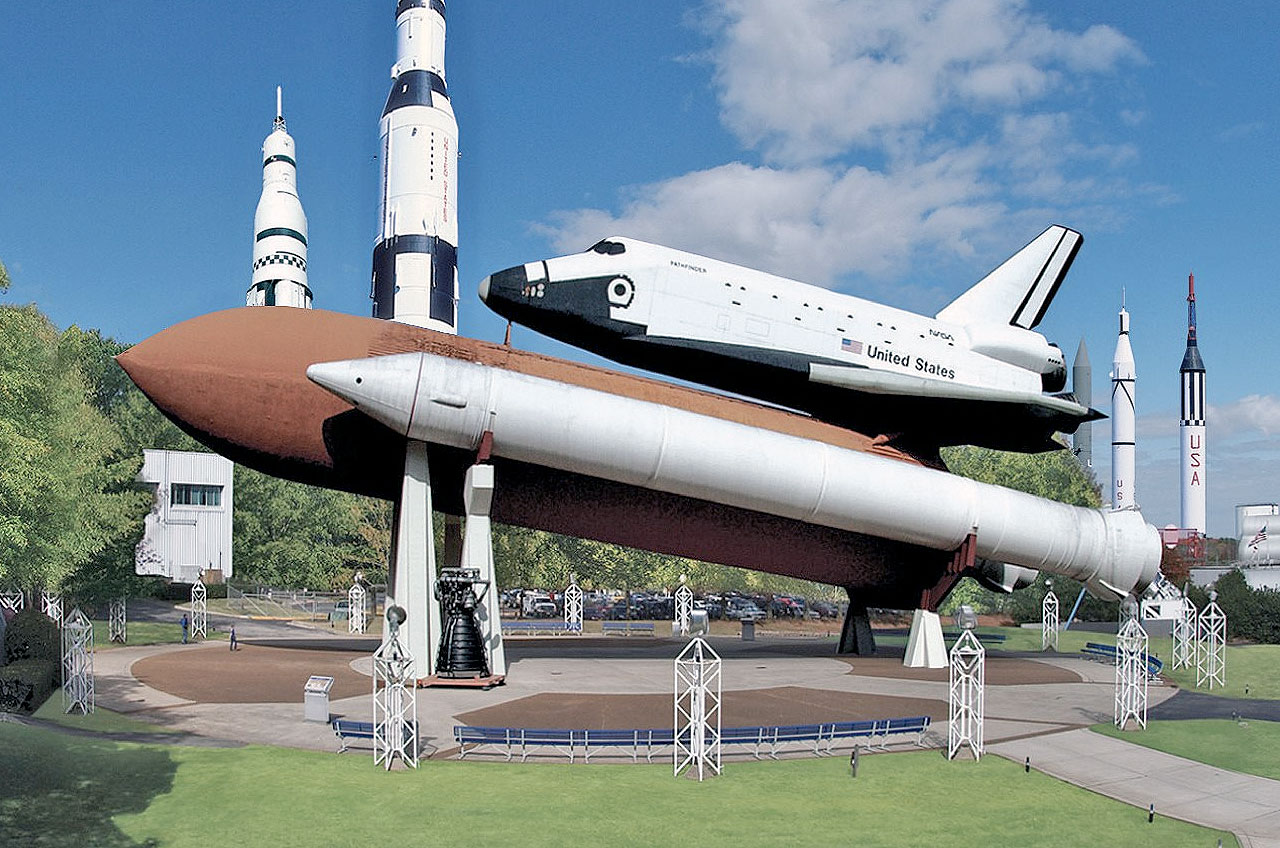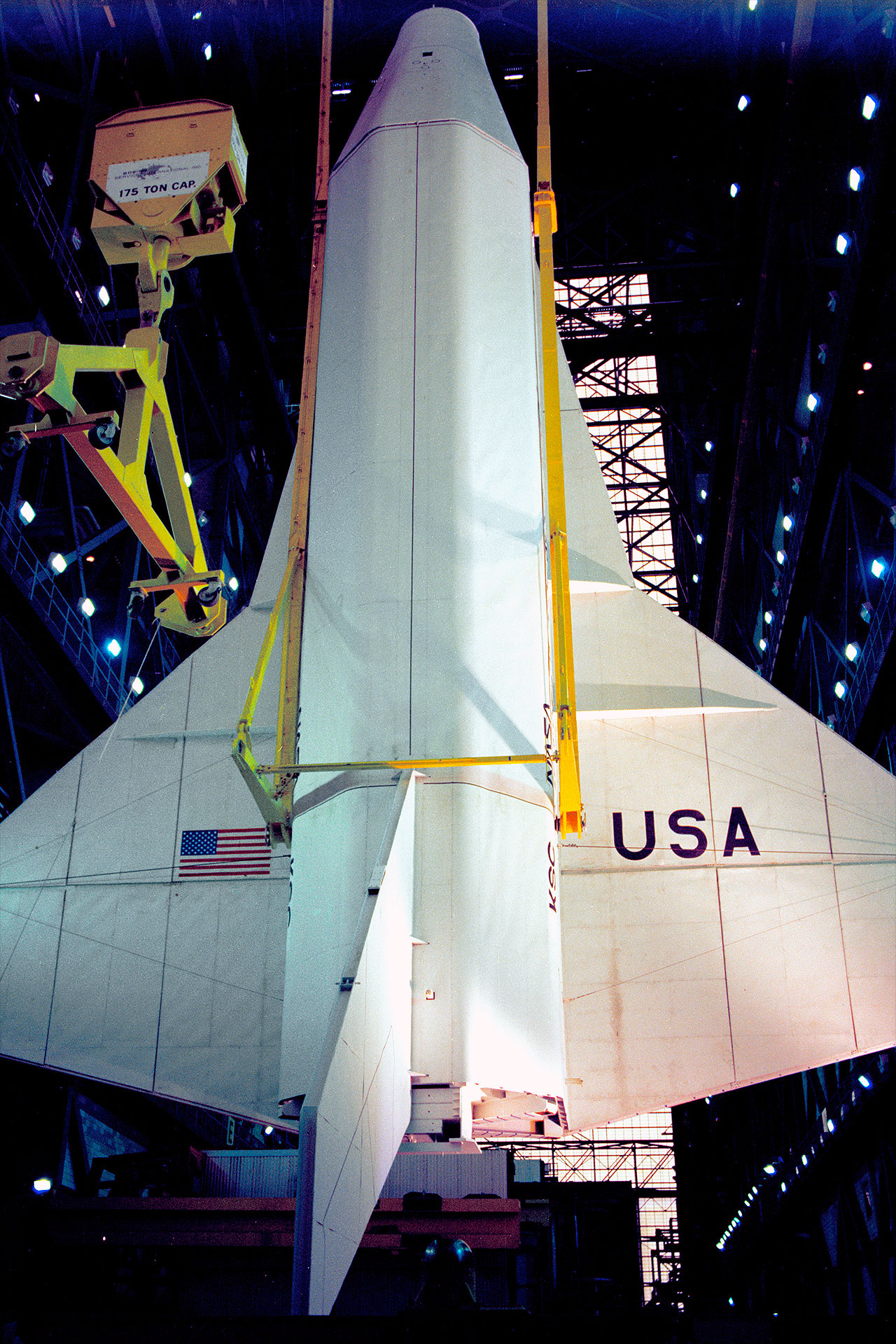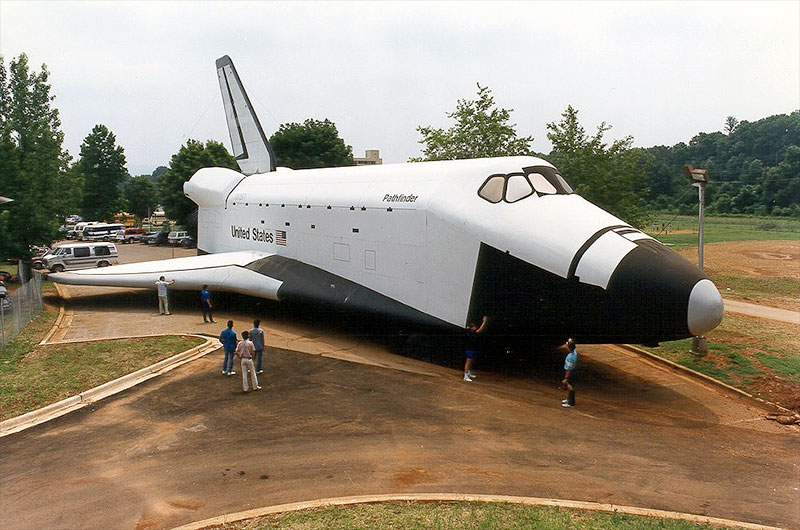Rocket Center gets $500K grant to 'save' mock NASA space shuttle

An early space shuttle mockup that was used in the test of NASA ground facilities before becoming part of a landmark public display has qualified as an "American Treasure" worthy of preservation and a half-a-million-dollar federal grant.
The National Park Service (NPS) on Thursday (Aug. 20) announced that it was providing $500,000 towards the conservation and restoration of the space shuttle Pathfinder located at the U.S. Space & Rocket Center in Huntsville, Alabama. More than 40 years old, the mock orbiter is part of the world's first and currently only "full-stack" display of a space shuttle launch vehicle, and has been viewed by millions of people, including the hundreds of thousands of students who attended Space Camp at the rocket center.
The award is part of $12.8 million in Save America's Treasures grants that are going this year to fund 42 preservation and conservation projects in 26 states. The Save America's Treasures program is run by the NPS in partnership with the Institute of Museum and Library Services, the National Endowment for the Arts and the National Endowment for the Humanities.
Related: NASA's space shuttles: Where are they now?

"We are honored to have received this generous Save America's Treasures grant to help us preserve the Pathfinder space shuttle, a beloved exhibit at the U.S. Space & Rocket Center and a critical piece of hardware in the American space program," Louie Ramirez, CEO and executive director of the Space & Rocket Center, said in a statement. "Pathfinder was our top restoration project in 2020, and now this grant provides us a path forward for restoring this important artifact in the future."
Built in 1977 out of wood and steel, Pathfinder was designed to be roughly the same size, weight and shape of a space shuttle orbiter, but lacked the exterior details that eventually made Enterprise, Columbia and the other winged vehicles iconic. Living up to its later-given name, Pathfinder was used as an advance stand-in for the soon-to-come real orbiters in order to work out the procedures for moving and handling the space shuttles.
The mockup was used in ground tests at the Marshall Space Flight Center in Huntsville, as well as at Kennedy Space Center in Florida, where it was hoisted by cranes inside the Vehicle Assembly Building (VAB) and at the Mate/Demate Device on the Shuttle Landing Facility apron, as well inside the orbiter processing facilities.
Get the Space.com Newsletter
Breaking space news, the latest updates on rocket launches, skywatching events and more!

Following its operational use and sitting in storage at Marshall for several years, Pathfinder was acquired by the America-Japan Society and was modified so that it more closely resembled the space-worthy orbiters. It was then shipped to Tokyo and exhibited as part of the "Great Space Shuttle Exposition" from 1983 to 1984.
Upon its return to the U.S., Pathfinder found a new and permanent home at the Space & Rocket Center, where it was eventually mated with a propulsion test article for the shuttle's external fuel tank and two prototype solid rocket boosters. Its outfitting also included two engine nozzles that had flown on the first launch of the space shuttle Columbia, STS-1, in 1981.
More than three decades of outdoor display took its toll on Pathfinder, raising the need for its restoration. Structural concerns have led to its plaza needing to be partially cordoned off and for one of its components being temporarily removed to keep visitors safe.
The Save America's Treasures award is a matching program, such that the Space & Rocket Center will need to raise at least an additional $500,000 during the grant period. The scope and total cost of the project is still to be determined.
"We applied for this grant long before the global coronavirus pandemic hit with its resulting financial devastation to the center," Ramirez said, referencing the $1.5 million shortfall that the center needed to raise to remain open through next spring, for which it turned to its alumni and corporate patrons to help fund. "The matching aspect of the grant presents us with a unique challenge as we continue our Save Space Camp campaign to recover from pandemic-related losses."
"The grant, however, does provide us with time to work with community partners to help raise the funds it will take for this massive project. We look forward to working with our U.S. Space & Rocket Center Education Foundation to raise these funds over the next year or so," he said.
Follow collectSPACE.com on Facebook and on Twitter at @collectSPACE. Copyright 2020 collectSPACE.com. All rights reserved.
Join our Space Forums to keep talking space on the latest missions, night sky and more! And if you have a news tip, correction or comment, let us know at: community@space.com.

Robert Pearlman is a space historian, journalist and the founder and editor of collectSPACE.com, a daily news publication and community devoted to space history with a particular focus on how and where space exploration intersects with pop culture. Pearlman is also a contributing writer for Space.com and co-author of "Space Stations: The Art, Science, and Reality of Working in Space” published by Smithsonian Books in 2018.In 2009, he was inducted into the U.S. Space Camp Hall of Fame in Huntsville, Alabama. In 2021, he was honored by the American Astronautical Society with the Ordway Award for Sustained Excellence in Spaceflight History. In 2023, the National Space Club Florida Committee recognized Pearlman with the Kolcum News and Communications Award for excellence in telling the space story along the Space Coast and throughout the world.










